More than 80 percent of Americans will experience lower back pain at some point in their lives, with the associated medical costs exceeding $100 billion dollars per year.
Likewise, over the course of their lives, 40 percent of people experience sciatica pain, with the instances of pain becoming more prevalent as people age. Those who do experience sciatica pain also commonly have back pain.
Though oftentimes traditional medicine won’t have any effect beyond pain management, it’s why more and more people have started turning to alternatives like yoga to not just manage pain, but also cure it.
Related: 7 Erase My Back Pain Stretches & Exercises
Yoga For Back and Sciatica Pain
Starting thousands of years ago, people used yoga to realign the human body and mind while both strengthening and stretching the musculoskeletal system. But the advent of modern medicine pushed the exercises into the shadows.
Today, we’re just rediscovering the benefits of yoga as western medicine continues to struggle dealing with chronic ailments. When side effects pile up next to pill cases, people naturally turn to healthier alternatives.
And yoga makes sense for back and sciatica pain. Poses and stretching help elongate and strengthen the back’s muscles and ligaments, which in turn reduces pressure on the discs, spine, and supporting muscles.
Using yoga to build a strong foundation can help eliminate the root causes of your pain and help ensure it doesn’t come back. So to help get you on the road to a pain-free life, we’re breaking down 12 yoga poses for sciatica and back pain.
Related: 5 Best Massagers for Sciatica Pain
1&2. Cat & Cow Pose
For our first pose, we’re actually covering two poses that anyone (even someone starting with severe pain) can handle. Cow pose starts on four limbs with your shoulders over your wrists and your knees over your hips.
Keep your knees hip-width apart and inhale. Your belly should drop to the ground while your tailbone moves upwards and your lower back arches slightly. Exhale, straighten the spine, and repeat.
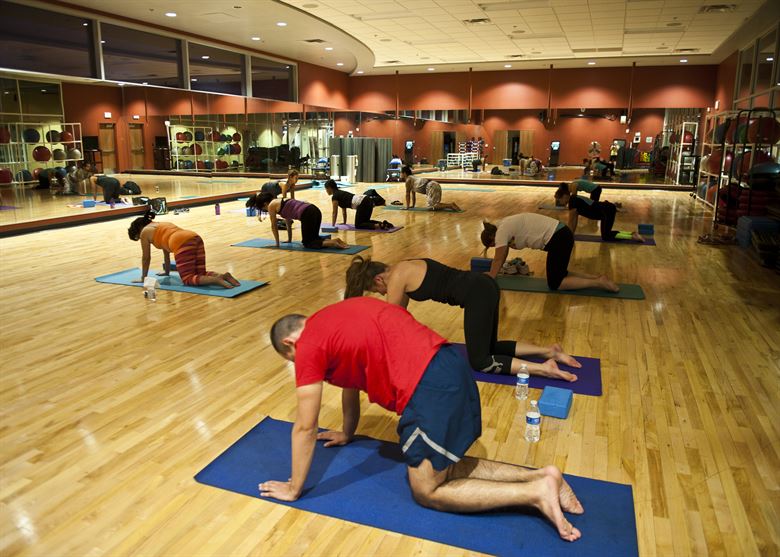
Cat pose is just the opposite of cow pose (and exercises should alternate). Drop your tailbone towards the ground and bring your belly upwards. Arch your back like a Halloween cat and allow your head and neck to relax.
Note: This exercise puts pressure on your lower back, elbows, and knees. Less arching in either direction can help relieve the pressure.
Related: 10 Essential Oils For Back Pain
3. Downward Facing Dog
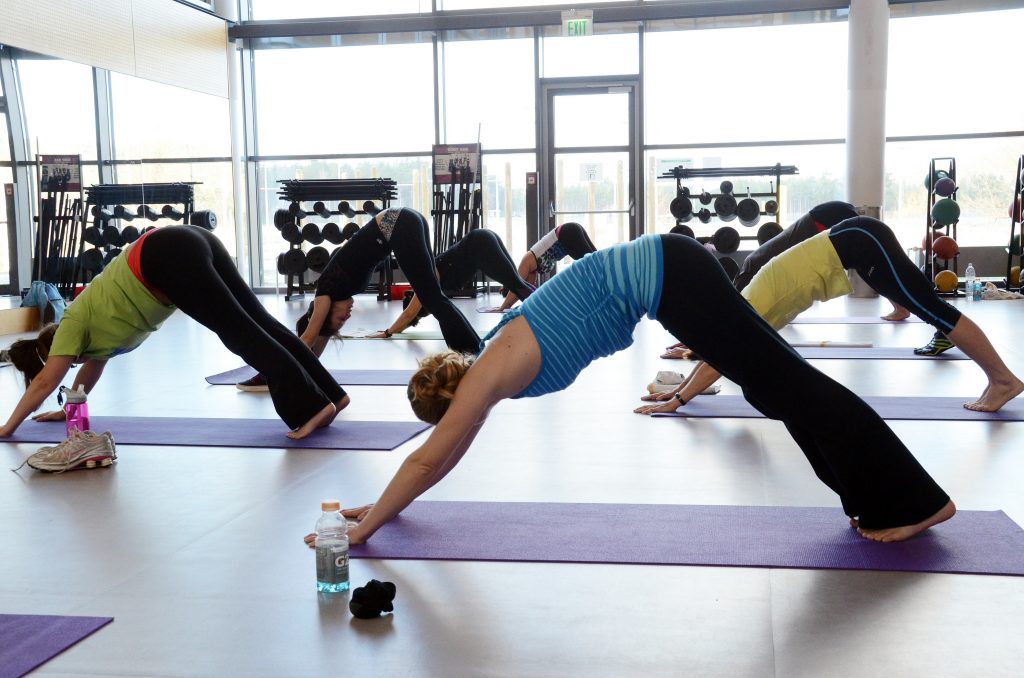
Downward facing dog is an extension of the cat/cow pose. Begin in the same position as cow/cat, then push your hands forward and your legs back. Your glutes should rise and make an inverted “V” with your torso.
The stretch should start in the lower back and extend to the legs the more you straighten your knees. Hold the pose for as long as possible and slowly walk back towards the ground.
Note: This pose doesn’t particularly stress the back or sciatica, and holding the pose can strengthen the core muscles and prevent pain in the future.
4. Child’s Pose

Start with four limbs on the floor like downward dog or cow/cat pose. Bring your knees forward and together, and then sit back on your heels. Lean your torso forward and let your arms drape behind your body. Your back should hump over slightly.
Note: This pose elongates the spine and stretches the lower back. However, it’s hard on the knees and can put pressure on your shoulders.
Related: 12 Best Sciatica Stretches To Help You Get Rid of Sciatica, Hip And Lower Back Pain
5. Rabbit Pose
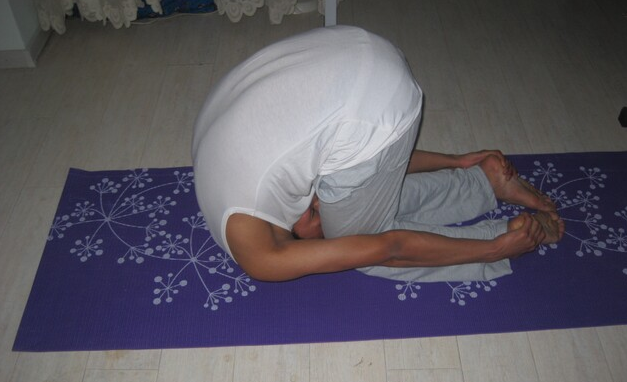
From child’s pose, pull your hands towards your heels and bring your head backwards towards your legs. With practice, your head should nearly touch your knees. Now inhale, lift your hips upwards and pull your head further back.
Hold this pose for 5 – 10 breaths and exhale. Move your body back to child’s pose and repeat until you’re fatigued.
Note: Placing a blanket under your knees can relieve knee pain. Your spine stretches to its forward limit which can alleviate pain radiating from the mid-back.
Related: 10 Best Mattresses For Sciatica and Back Pain
6. Apanasana
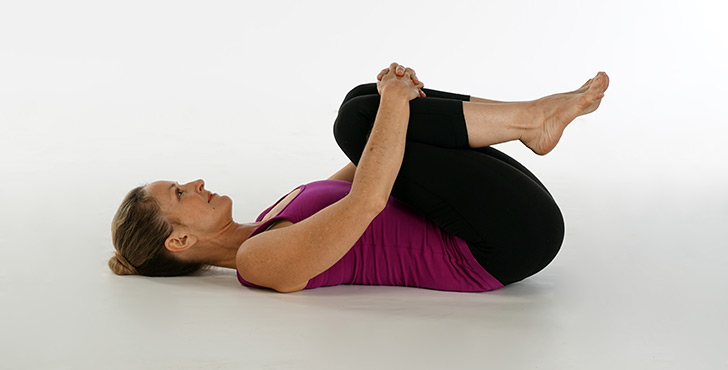
A great beginner pose, apanasana starts with your body lying flat across the ground. Take a deep breath and bring both knees to your chest. Clasp your hands around your knees while bringing your tailbone towards the ground to stretch your spine.
Note: This pose can aggravate spinal cord injuries, but will lengthen tensed muscles that could put pressure on the sciatic nerve.
7. Ardha Apanasana
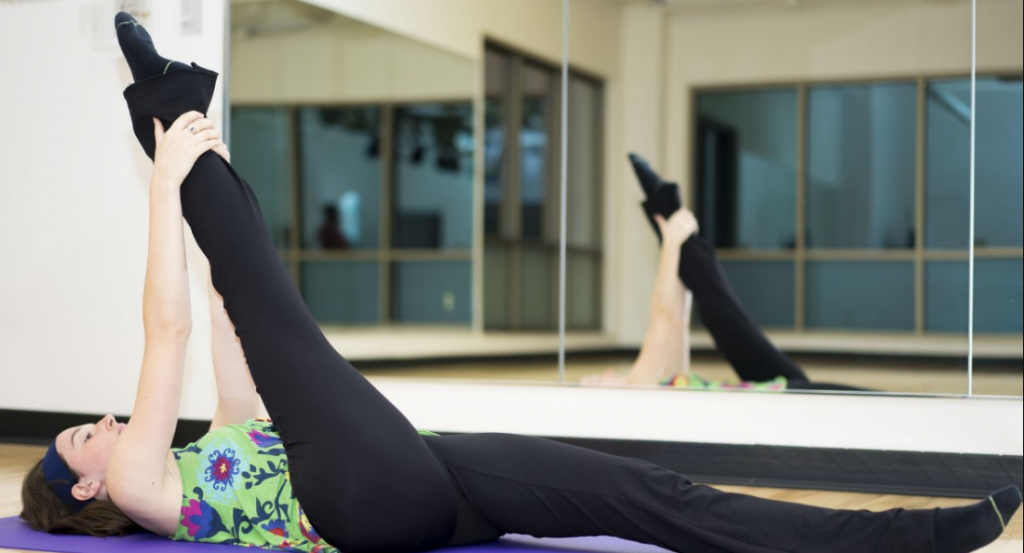
Very similar to the apanasana, this pose starts on your back and involves bringing a knee to your chest. Though this time you’re only bringing one knee, at least to hold.
Start by bringing both knees to your chest and then choosing a leg to keep held. Extend the other leg straight, parallel to the floor and hold the pose.
Note: Careful if you’re experiencing severe sciatica pain. This stretch can irritate a pinched nerve at the lower-back junction.
8. Legs Up the Wall
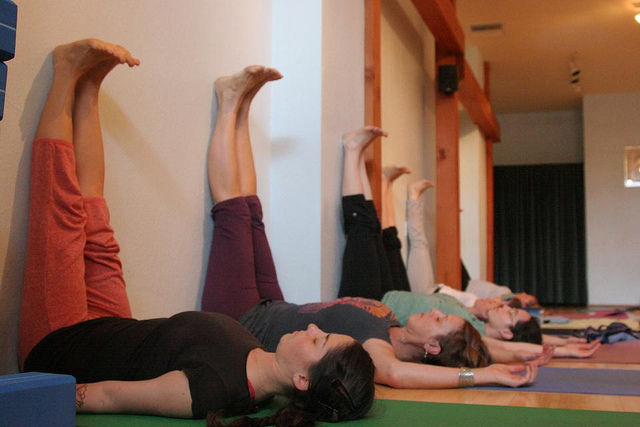
This pose doesn’t add too much stress to the lower back or sciatica, making it great for beginners. First, find a wall without anything nearby.
Next, place your glutes against the wall and rest your head and back on the ground. Finally, extend your legs up the wall. The closer your glutes are to the wall, the deeper the lower back stretch.
Note: This stretch won’t elongate the lower back too much, but can help stretch the lower back/leg junction which can help alleviate some forms of sciatica pain.
9. Forward Fold
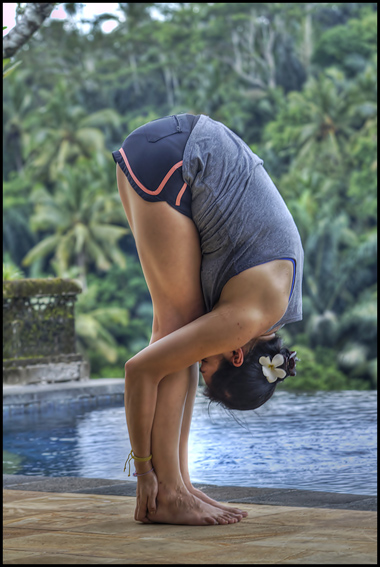
You’ll find this pose familiar if you’ve ever stretched to touch your toes. Start standing straight and bend at the waist. Be sure to keep a flex in your knees as you move your hands towards the ground (the greater your pain the more you should bend your knees).
Relax your chest, head, and neck while flexing your quadriceps to allow your hamstrings to release (in time you’ll learn to relax the hamstrings without flexing your quadriceps). Keep your hips over your ankles and your weight on the balls of your feet.
Note: This pose elongates the lower back, spine, and stretches the hamstrings and calves. The elongation can relieve pressure on the sciatica.
10. Supine Spinal Twist
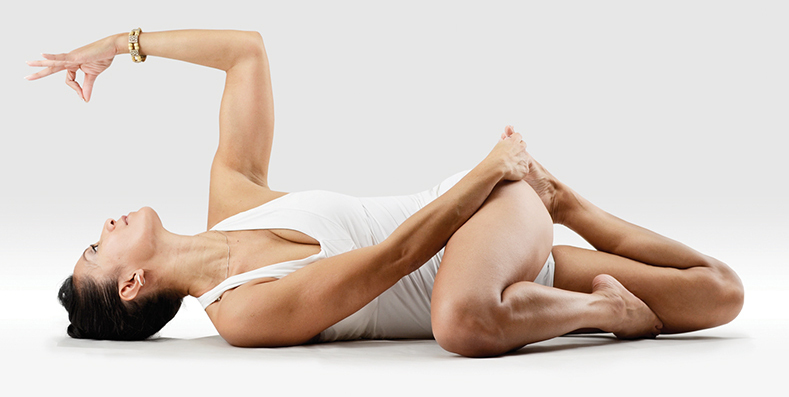
This pose starts on your back with either knee (though just one) pulled tight to your chest. For our purposes, we’ll assume your left knee pulled upwards. Next, exhale and roll onto your right hip as your left knee pulls towards the ground. Extend your left arm from the shoulder and lay it flat on the ground.
Make sure to keep your right hand on your right leg, and breathe throughout the exercise, letting your right knee fall to the floor. Hold the pose for 10 – 30 seconds, then return to your back and repeat the steps for the other leg.
Note: This pose is made to stretch the lower back muscles and realign your hips. It also hydrates the spinal discs, making it great for both back and sciatica pain.
Be careful if you’re just starting off. The lower back stretch is intense.

Diana Paul is a certified nutritionist who writes for leading health blogs. She is a master herbalist, yoga teacher, forager, and wild-crafting writer She is focused on helping people transform life blocks to opportunities. Based in NYC, she often holds health seminars and lectures.
